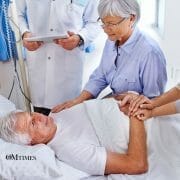Massage Therapy for People with Cancer


Some clients will need to stay in their recliner or wheelchair. Others will find that massage chairs are impossible because of radiation burns on the chest or breathing difficulties. Finding a comfortable position requires time and patience for many clients. Typically, therapists move quickly in positioning healthier clients; they stick to the positioning recipes learned in massage school. More creativity is needed with people who have injuries or illnesses.
General Positioning tips:
• Have pillows of all sizes on hand, they are more comfortable than bolsters.
• Have soft bath and hand towels available, and clean blankets.
• Consider adding extra table padding.
• Use open-ended questions when trying to discover client’s positioning preferences, such as: “Which do you prefer?” Rather than a question that leads to yes or no, such as: “Is that OK?”
• Allow plenty of time for positioning.
• Don’t make assumptions that a person is comfortable; keep experimenting.
• Approach positioning as part of the massage rather as something to hurry through to get to the massage. The process of positioning should be as relaxing as possible.
• Move s-l-o-w-l-y, allowing time between tasks rather than pushing and pulling items quickly into place.
Positioning Adjustments: Positioning usually needs to be adjusted for the following conditions. Next to each condition is the typical adjustment.
• Abdominal surgery—recent (no prone; when supine, elevate head and moderate elevation of
legs; hip flexion can be painful, so minimal rolling over at first).
• Breast surgery (no prone initially; eventually support under shoulder and sometimes abdomen of affected side).
OMTimes Magazine is one of the leading on-line content providers of positivity, wellness and personal empowerment. OMTimes Magazine - Co-Creating a More Conscious Reality




